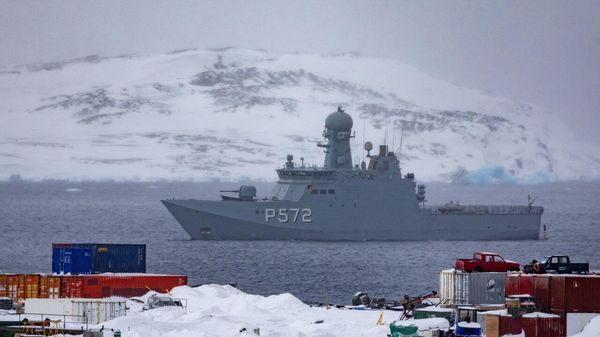NASA 's Orion capsule has splash-landed in the Pacific Ocean after completing a 1.4 million mile test flight around the Moon.
After checking over a couple of Apollo landing sites the Orion splashed down west of Mexico's Baja California near Guadalupe Island.
A Navy ship quickly moved in to recover the spacecraft and its silent occupants - three test dummies rigged with vibration sensors and radiation monitors.
The incoming capsule hit the atmosphere at 32 times the speed of sounds and endured temperatures of more than 2,750C.
NASA needed a successful splashdown to stay on track for the next Orion flight around the moon, which will hopefully have four astronauts, and is currently targeted for 2024.
Orion was the first capsule to visit the moon since NASA's last touched down there 50 years ago on December 11, 1972.
Apollo 17s Eugene Cernan and Harrison Schmitt spent three days exploring the lunar surface, the longest stay of the Apollo era. They were the last of the 12 moonwalkers.
Orion was the first flight of NASA's new Artemis moon program, named after Apollo's mythological twin sister, and cost $4billion.
NASA's chief of exploration mission office Nujoud Merancy said: "No one's been to the moon in my lifetime, right? So this is the exploration that so many of us have been dreaming about."
The splashdown occurred more than 300 miles south of the original target zone.
Orion logged 1.4 million miles as it zoomed to the moon and then entered a wide, swooping orbit for nearly a week before heading home.
It came within 80 miles of the moon twice. At its farthest, the capsule was more than 268,000 miles from Earth.
Its mission has helped pave the way for future astronauts on the next flight in a couple years.
The capsule passed within 80 miles of the far side of the moon, using the lunar gravity as a slingshot for the 237,000-mile ride back to Earth after spending a week in a wide, sweeping lunar orbit.
Once emerging from behind the moon and regaining communication with flight controllers in Houston, Orion beamed back photos of a close-up moon and a crescent Earth — Earthrise — in the distance.
The capsule also passed over the landing sites of Apollo 12 and 14 but at 1,200 miles up, it was too high to make out the descent stages of the lunar landers or anything else left behind by astronauts more than a half-century ago.
During a similar flyover two weeks ago, it was too dark for pictures but this time it was daylight.
The three-week test flight has "exceeded expectations" so far, according to officials.
Orion blasted off on November 16 on the debut flight of NASA’s most powerful rocket ever, the Space Launch System or SLS.
The next flight — as early as 2024 — will attempt to carry four astronauts around the moon. The third mission, targeted for 2025, will feature the first lunar landing by astronauts since the Apollo moon programme ended 50 years ago this month.







